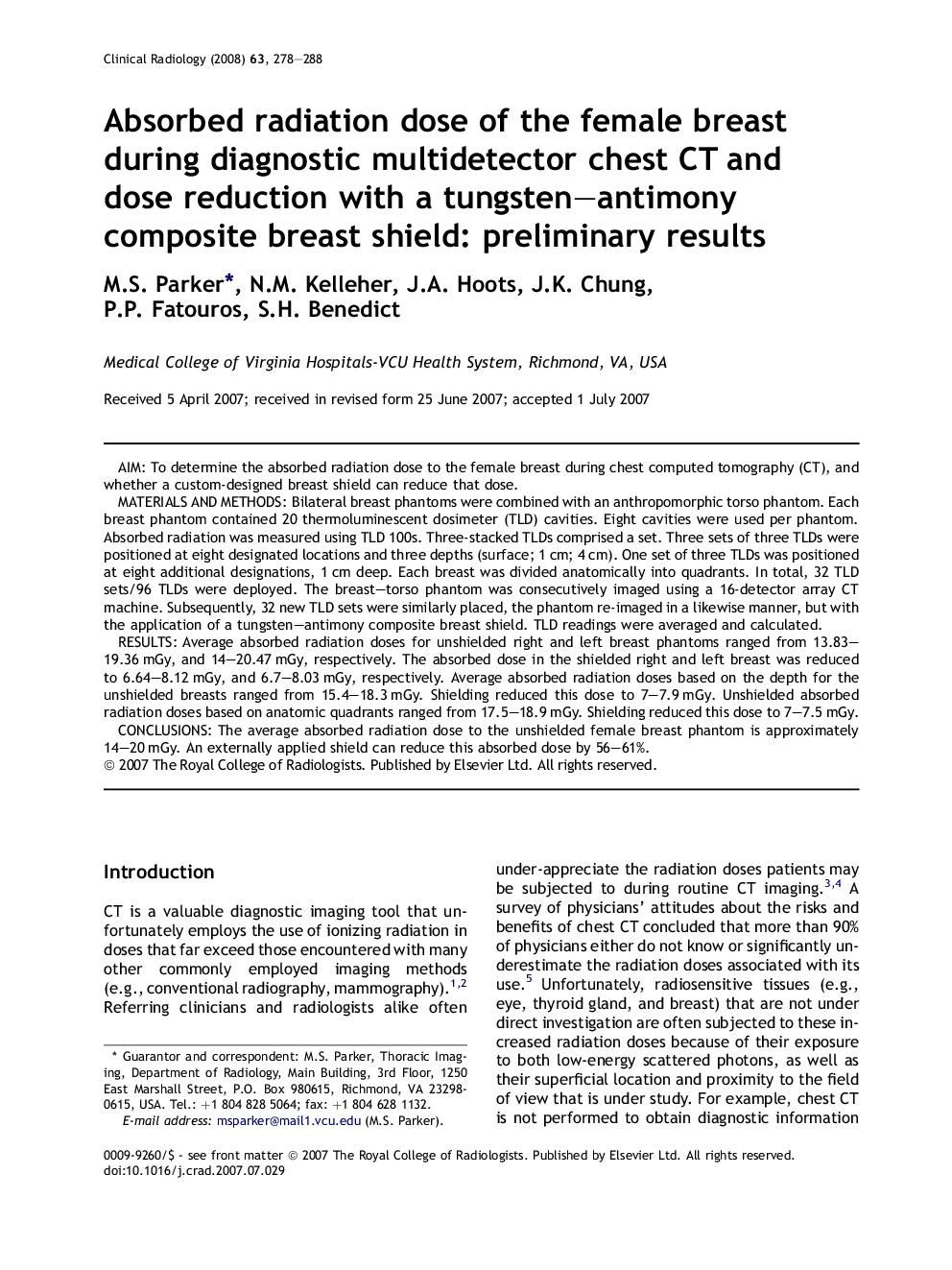| Article ID | Journal | Published Year | Pages | File Type |
|---|---|---|---|---|
| 3983579 | Clinical Radiology | 2008 | 11 Pages |
AimTo determine the absorbed radiation dose to the female breast during chest computed tomography (CT), and whether a custom-designed breast shield can reduce that dose.Materials and methodsBilateral breast phantoms were combined with an anthropomorphic torso phantom. Each breast phantom contained 20 thermoluminescent dosimeter (TLD) cavities. Eight cavities were used per phantom. Absorbed radiation was measured using TLD 100s. Three-stacked TLDs comprised a set. Three sets of three TLDs were positioned at eight designated locations and three depths (surface; 1 cm; 4 cm). One set of three TLDs was positioned at eight additional designations, 1 cm deep. Each breast was divided anatomically into quadrants. In total, 32 TLD sets/96 TLDs were deployed. The breast–torso phantom was consecutively imaged using a 16-detector array CT machine. Subsequently, 32 new TLD sets were similarly placed, the phantom re-imaged in a likewise manner, but with the application of a tungsten–antimony composite breast shield. TLD readings were averaged and calculated.ResultsAverage absorbed radiation doses for unshielded right and left breast phantoms ranged from 13.83–19.36 mGy, and 14–20.47 mGy, respectively. The absorbed dose in the shielded right and left breast was reduced to 6.64–8.12 mGy, and 6.7–8.03 mGy, respectively. Average absorbed radiation doses based on the depth for the unshielded breasts ranged from 15.4–18.3 mGy. Shielding reduced this dose to 7–7.9 mGy. Unshielded absorbed radiation doses based on anatomic quadrants ranged from 17.5–18.9 mGy. Shielding reduced this dose to 7–7.5 mGy.ConclusionsThe average absorbed radiation dose to the unshielded female breast phantom is approximately 14–20 mGy. An externally applied shield can reduce this absorbed dose by 56–61%.
